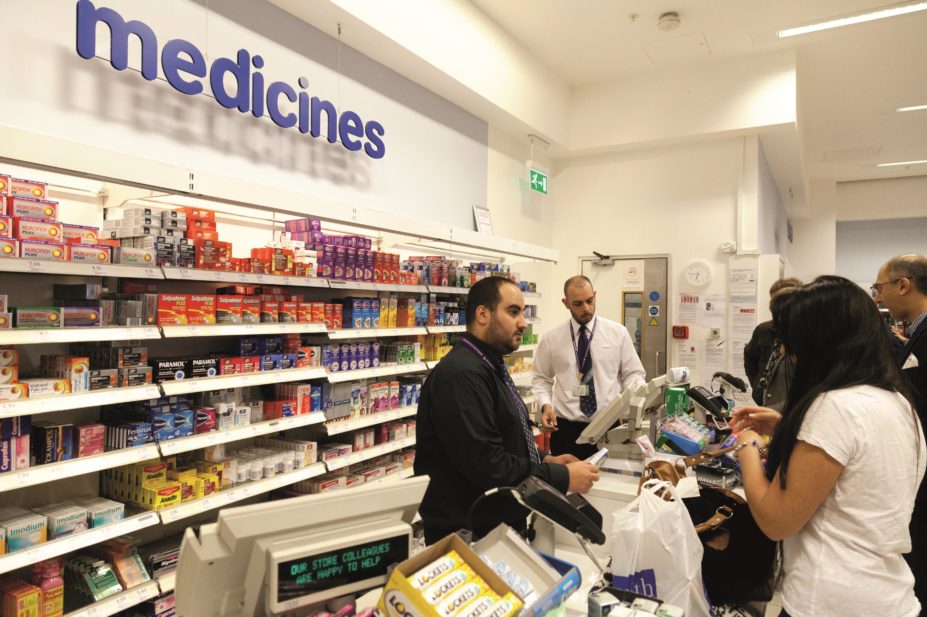
Kumar Sriskandan / Alamy Stock Photo
Community pharmacy teams regularly choose not to fulfil customers’ requests for over-the-counter (OTC) medicines, offering health advice or signposting them to other services instead, a study by Pharmacy Voice has revealed.
The research, based on practice-based audits involving almost half of England’s 11,7000 pharmacies (5,035), includes seven of the largest national multiple pharmacy chains, six regional independent multiples (together representing 250 branches) and 95 independent pharmacies.
Over a one-week period, pharmacies recorded 113,278 instances where pharmacy teams decided not to supply a requested OTC product to a customer, putting their interests ahead of sales. According to Pharmacy Voice, by extrapolation, this figure suggests that community pharmacy teams in England chose not to supply a requested OTC product around 13 million times per year.
The most frequently reported reason for not supplying an OTC product was when a member of the pharmacy team offered health advice instead, accounting for 29.3% of all cases where a product was not supplied.
In 25.3% of cases, the customer was referred to non-urgent NHS services, with the majority of these cases being referred to their GP (18.1%).
One in ten customers were referred to NHS ‘urgent care’ services (10.5%), most frequently a walk-in centre but sometimes GP out-of-hours services or A&E, while a further 7.8% were signposted to other information sources or to non-NHS services.
In nearly one in five cases (19.0%) pharmacy teams refused to supply an OTC product to people because the product was unsuitable for the patient; suspected misuse; or for legal reasons. In the remaining 8.0% of occasions that an OTC product was not supplied, it was because the customer was either unable or unwilling to pay.
Pharmacy Voice, which represents the community pharmacy sector across England, says it will use the data in its on-going discussions with the Department of Health on its proposals to cut NHS funding for community pharmacy and introduce more automated services.
The government acknowledges that the proposed cuts will result in the closure of some pharmacies, which may limit the public’s access to pharmacists’ support and advice for dealing with minor illnesses, such as those highlighted in the study.
Rob Darracott, chief executive of Pharmacy Voice, says: “This year’s survey provides yet more insight into how community pharmacists and their teams continue to make use of their clinical expertise and put patient need ahead of commercial interests. The data also show the role that community pharmacies are playing as the first port of call in supporting the public to care for themselves, helping to reduce demand and pressure on other services such as GPs.
“We hope that the government considers the lynchpin role that community pharmacy plays in the local healthcare community when reviewing their pharmacy reform proposals,” he adds.
A spokesperson for the National Pharmacy Association comments: “This is a timely reminder to government that pharmacies are far more than just a distribution point for medicines. So much of the contribution pharmacies make goes unrecorded, so this is a useful addition to the evidence based case for sustained public investment in community pharmacy.
“The accessible, face-to-face advice highlighted in the audit must never be taken for granted by policy makers, especially given the obvious demand management benefits of such support to other parts of the health and social care system.”
David Mowat, minister for community health and care, says: “Pharmacy is a vital front line service and I am looking forward to working with the sector to understand more about the opportunities and challenges in this area. I am determined to support the sector as it modernises, making sure that we make the most of pharmacists’ skills and provide the best possible service to the public.”
You may also be interested in
How to conduct a clinical audit
Guide to audit
